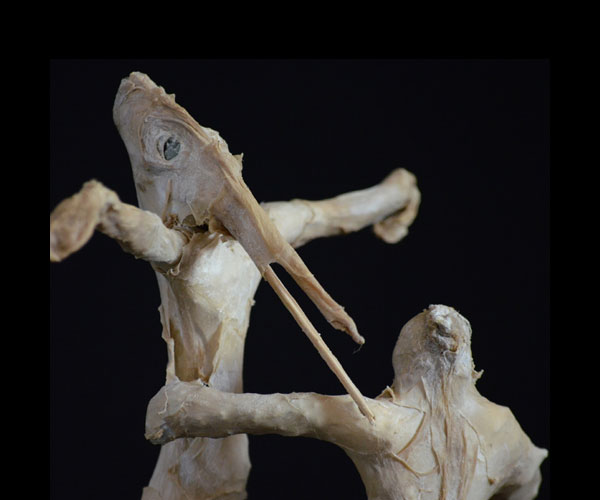10:45 washing dishes at the sink. I look out the window and see a doe walking slowly across the lawn with her fawn. The fawn runs a few feet, while the mother waits, then the fawn stops and the mother takes a step, In this way they are proceeding across the lawn. I see the dog at the edge of the porch looking at them, but looking in the way she has of not seeing, of seeing over or through what is directly in her vision. So neither of us wants to startle the doe. It is a lovely sight, this obviously bonded family taking a morning stroll across my lawn. Robins are hopping through the grass, a red tailed squirrel suddenly lept off a fence and disappears behind the greenhouse. I’m know the iphone shot through the window will be awful, but I don’t dare go outside, so I shoot anyway. The image is poor but sweet, the washed out colors convey a certain lack of authority, as if it is a photograph of a photograph.

At 4:45 I take the recyclables to the Grand Island Dump. The huge room is immaculate. All the bins are empty, tons of plastics have been squashed and packed on palettes waiting to be shipped. Two attendants, one who’s a volunteer fireman and the other a selectman, greet me and ask if I want help. I’ve been coming here for 10 years now, but I don’t know his name. I don’t need help. I can’t stop staring at the compacted structures and I walk around, shooting on my phone. The selectman looks amused.
Many years ago, I lived on Canal street in New York City. On Wednesdays, the few small sweatshops left in the neighborhood would bundle up their unused fabrics, drag them out on pallets for the night time garbage pick-up. By the time the trucks arrived, neighborhood artists trolling for found materials would have picked the pallets clean.
It’s interesting, this impulse to reclaim garbage as art, as if by turning our trash into “art” we are doing something for the environment, while in truth we’re only postponing its suffocating release into our environment. It’s a kind of recycling, only not as a useful object, but as a cultural comment, as art. For about a year, I collected every bit of plastic that circulated in my house and studio, and after a year, I had a big closet stacked with tubs filled with bottle caps sorted by color, can tabs, plastic bags, medicine bottles, ties, garden containers, dried contact lenses, packaging sorted by shape, packing peanuts – everything unsuitable for the recycle bins. I had no idea what to make with this stuff. My mind was filled with images of birds and marine life dead on beaches, their bellies slit open, revealing batteries, caps, netting, fuel canisters, milk cartons – suffocated by the litter humans discard in daily life. Reworking those images seemed exploitive rather than helpful, and I wonder what it takes for humans to turn their grief into constructive action. Chris Jordan has already broken our hearts with his images of dead albatross in the Midway Islands, where the birds fly out over the oceans, collecting plastics as food for their young, who fill up with batteries, bottle caps, syringes. What image is more powerful than that of a mother unknowingly poisoning her child.
Another option was to use the garbage, like this Nigerian sculptor to create new art. But his work takes a village and is conguent with the life of that village, and conveys a condition that I have no business appropriating, the bottle caps are the relics of a dark story where liquor was an agent of exchange in the slavery market. I could imagine building reliefs and sculpture, but that would entail additional toxic material, like resins or glues, which would negate anything constructive, so finally, in a grand purge, I throw it all out, with full understanding of my failure and announce, when I get home, that we are never going to buy anything that comes in a plastic bottle. To no avail.
I find this article tracking the Journey of a Plastic Bottle in the Atlantic Magazine.
The refuse associate at the town dump told me that a truck would arrive soon to pick up the pallets. He doesn’t know where they’re going, only that the name on the truck begins with CAN. Canada then? The same Canada that begins 12 miles north of my house on Border Road? It doesn’t seem right that Canada is eating my trash, but then this is the day that my country screws the G7.
So what am I left with? A healthy doe moves across my landscape with her infant at the beginning of the day and at the end, a vision of garbage laden barges plying the oceans.

